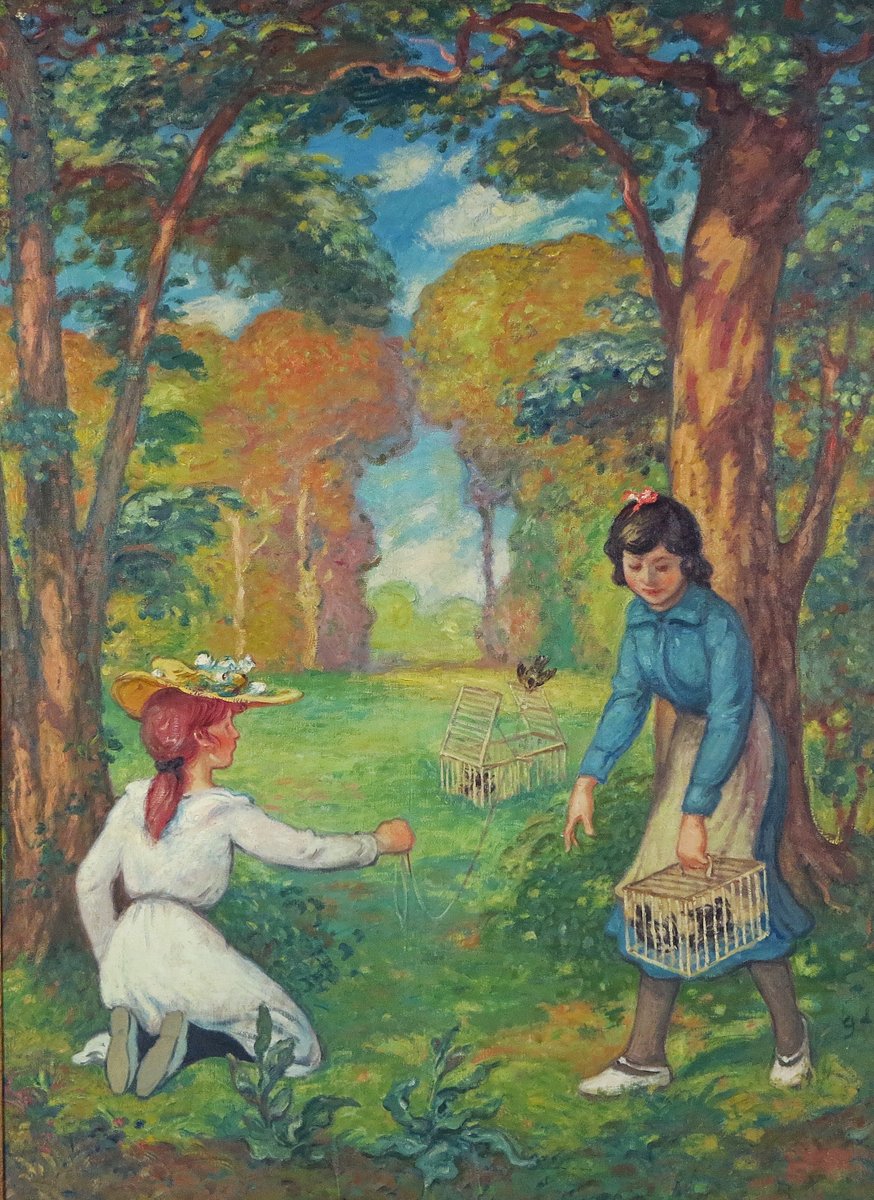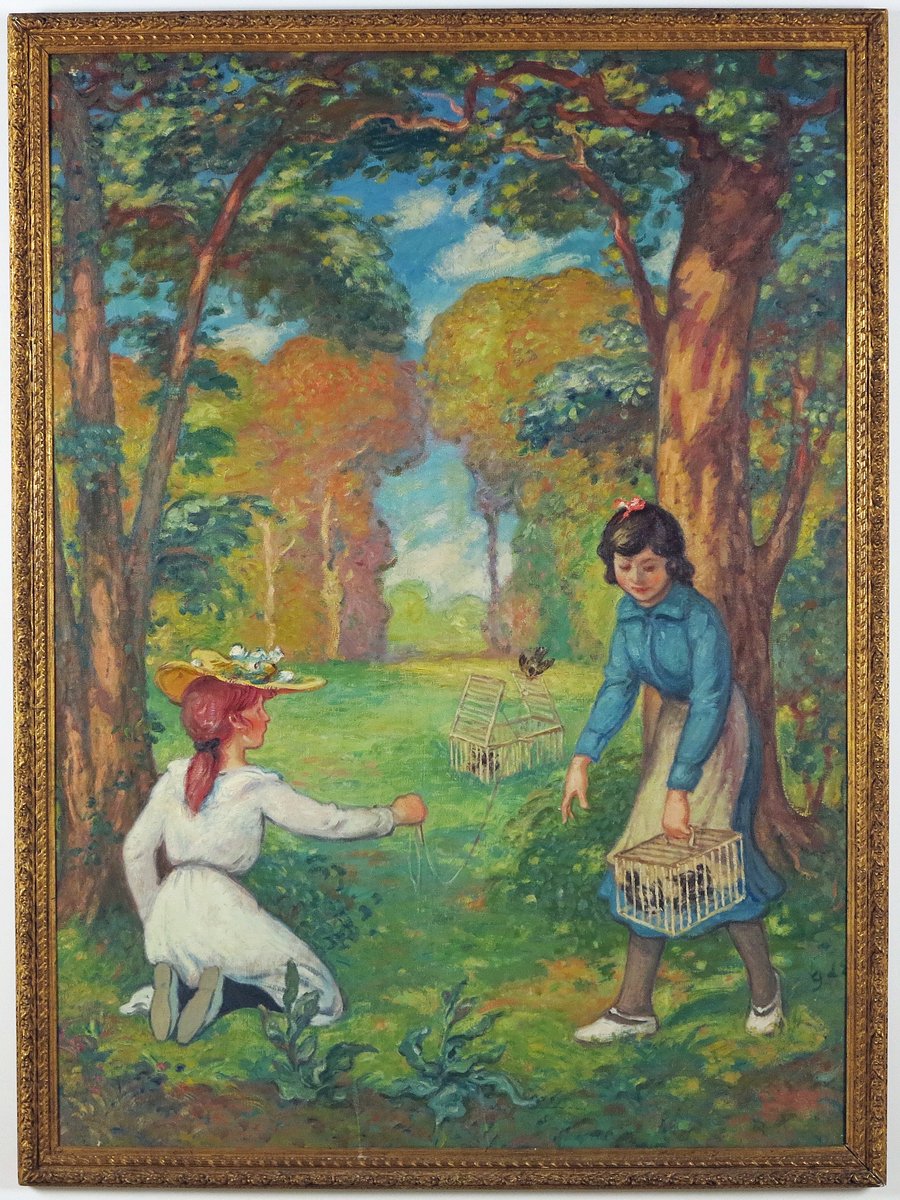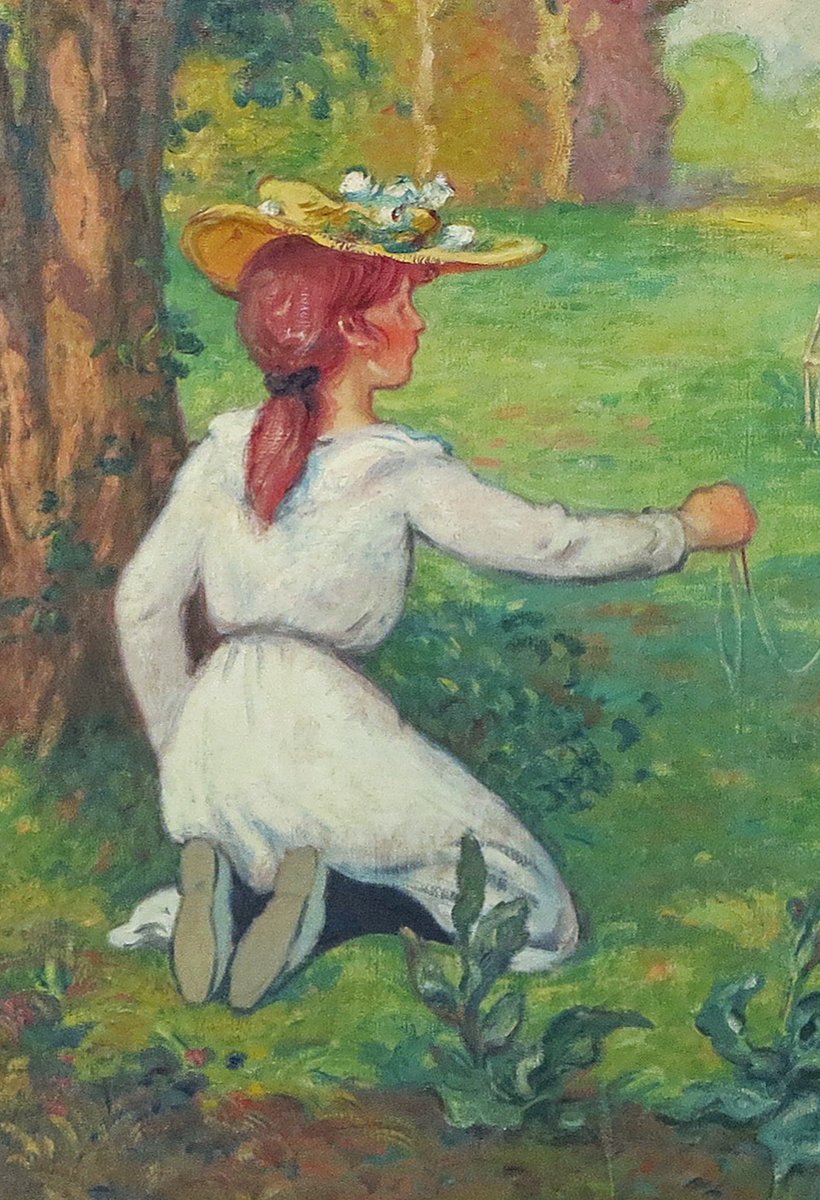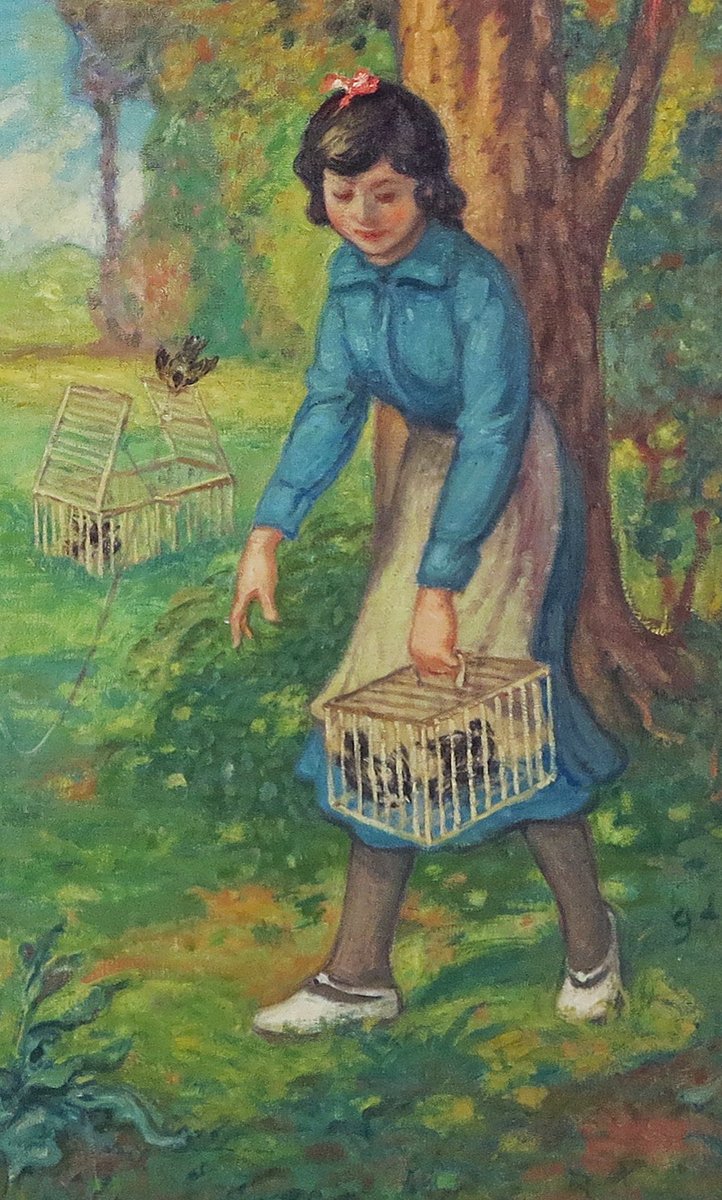Paintings
Georges D’Espagnat
French, 1870-1950Le Piège à Oiseaux
Oil on canvas66 3/4 by 48 1/2 in. W/frame 70 ¾ by 52 ½ in.
Authentication:
This work will be included in the forthcoming catalogue raisonné being prepared by Jean-Dominique Jacquemond.
Provenance:
Schoneman Galleries, Inc., New York
Private Collection, New York (acquired from the above in 1968)
Acquired from the above
Le Trianon Fine Art & Antiques
See Artist Bio below.
Georges D’Espagnat
French, 1870-1950Born at Melun on 14th August 1870, Georges d’Espagnat went on to become one of the most individualistic of 20th century French painters. Although associated with many of the greatest names in 20th century art, and though his work has at various times been identified as Fauve, Nabis or just plain Impressionist, he retained his own individuality. As Bénézit notes: “D’Espagnat, sans cesser d’être un Indépendant, a pris une place marquante parmi les maîtres modernes.”
Having moved to Paris at the age of 18 he declined the academic training of the Ecole des Beaux-Arts and chose instead to independently study the works of the Old Masters in the Louvre. He also travelled to Italy where he particularly admired the work of the Venetians, Titian and Tintoretto. In 1891 he took part in the Salon des Refusés and in the following year exhibited four paintings at the Salon des Indépendants.
In 1895 he had his first one-man show in Paris and three years after that a show of his work was held at Durand-Ruel Gallery, an association that was to continue for the rest of his life including exhibitions at their New York gallery. Though he himself never quite achieved the greatness of his peers, he was associated with greatness for much of his life. A close friendship with Renoir was only terminated by the master’s death in 1919, a group exhibition of 1907 at the Marcel Bernheim Gallery included himself, Bonnard, Cézanne, Matisse, Pissarro, Rouault, Seurat and Toulouse-Lautrec while a later exhibition at the same venue in 1926 consisted of d’Espagnat, André, Bonnard, Braque, Chagall, Matisse, Picasso and Signac. From 1936 onwards he served as a Professor at the Ecole Nationale Superieure des Beaux-Arts in Paris and he died in the French capital on 17th April, 1950. In the following year he was honoured by a retrospective exhibition at the Salon d’Automne, of which he had been Vice-President for many years.
Museums and Exhibitions:Examples of his work are in many of the world’s most important museums including the Museum of Fine Arts, Boston, the Musée Royal des Beaux-Arts, Brussels, the Metropolitan Museum of Art, New York, the Art Institute, Chicago, the Pushkin Museum, Moscow, the Musée d’Orsay and the Musée d’Art Moderne, Paris, and the National Museum of Western Art, Tokyo.





